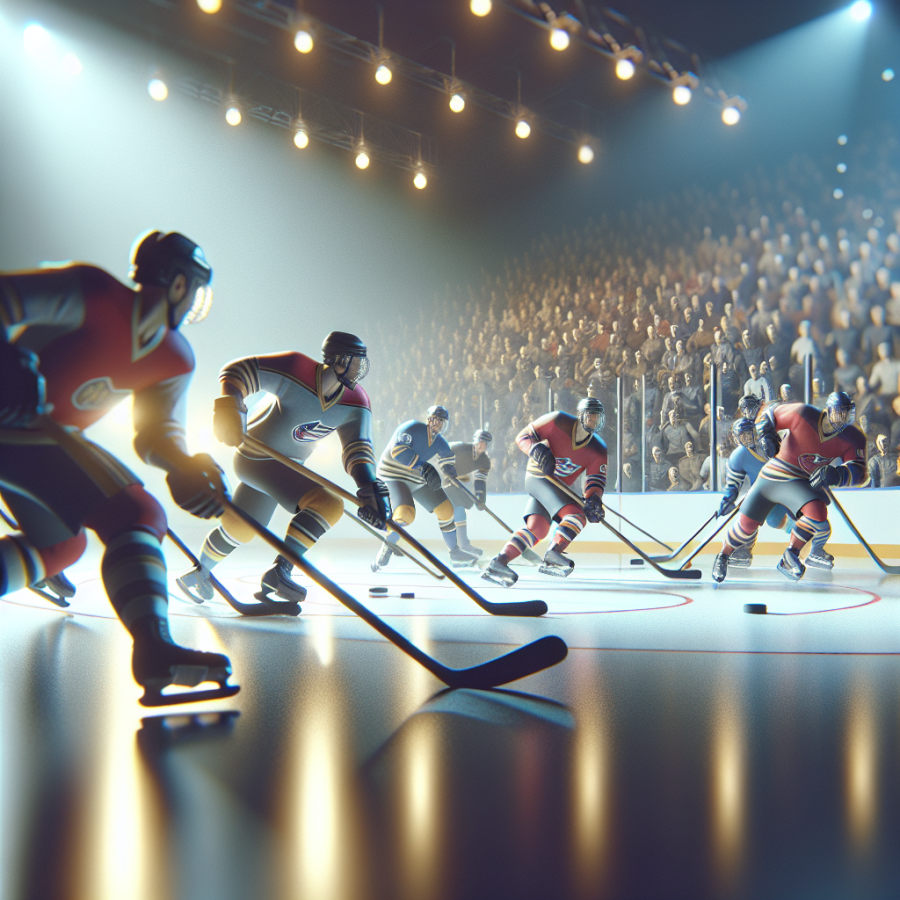Mastering the Rink: Techniques and Strategies of Elite Rink Hockey Players
Professional rink hockey players possess a unique set of skills that distinguish them from amateur enthusiasts. They have honed their abilities through countless hours of practice and intense competition. One of the most critical aspects of their training involves mastering complex techniques and strategic approaches to the game.
One fundamental skill that elite rink hockey players continually refine is their ability to skate with precision and agility. Skating is more than just a mode of movement in rink hockey; it's the foundation upon which all other skills are built. Professionals practice various skating drills to improve speed, balance, and quick directional changes, which are vital for both offense and defense.
Puck control is another area where professional rink hockey players excel. Elite players can maneuver the puck with incredible dexterity, executing fakes and dekes that can leave defenders bewildered. They achieve this through a deep understanding of how their stick affects the puck's movement and use this knowledge to maintain control even at high speeds or in tightly contested spaces.
Shooting accuracy is a skill that separates the good players from the great. Professional players spend a significant amount of time perfecting their shot, knowing that a well-placed puck can be the difference between victory and defeat. They work on various shots, from powerful slap shots to precise wrist shots, and understand when to use each type to maximize their chances of scoring.
Passing is another crucial component of elite rink hockey gameplay. Pros know how to deliver a puck not only to where their teammate is but also to where they will be, anticipating the flow of the game. This foresight is developed through a combination of keen observation and experience. Quick and accurate passing is essential for maintaining possession and creating scoring opportunities.
Defensive tactics are just as important as offensive prowess. Elite players study their opponents, learning to predict and counter their moves. They excel in stealing the puck and blocking shots, employing both physical agility and strategic positioning to disrupt the opposing team's plays.
Goalkeeping at the professional level is a blend of athleticism and psychology. Top-notch goalkeepers not only have quick reflexes and the ability to make miraculous saves, but they also understand the mindset of the players shooting against them. They often anticipate where a shot will be aimed and position themselves accordingly well before the puck is released from the shooter's stick.
Finally, team strategies play a pivotal role in the success of professional rink hockey players.
Read also:
Ascending New Heights: The Thrill of Multi-Pitch Climbing
Exploring the Dynamic World of Rink Hockey: A Sport on Wheels
Rink hockey, also known as roller hockey, is an exciting and fast-paced sport that combines elements of ice hockey, field hockey, and roller skating. This distinctive sport has created a vibrant community of passionate players and devoted fans who revel in the unique blend of speed, skill, and strategy required to excel on the rink.
At the heart of rink hockey is the gameplay, which is characterized by its fluidity and rapid pace. Players glide across the smooth surface of the rink on quad roller skates, maneuvering a small, hard ball with curved sticks. The sport requires a high level of skating prowess, as players need to be able to perform quick turns, sudden stops, and agile movements to keep up with the fast-moving ball and to evade opponents.
One of the core aspects of rink hockey that sets it apart from other sports is its distinctive playing environment. Rink hockey games are played on a marked surface that's about the size of a basketball court, with rounded corners and a barrier surrounding it to keep the ball in play. The enclosed space contributes to the game’s intense and fast nature, as players must constantly be aware of their positioning and be ready to react to the ball bouncing off the barriers.
Team composition in rink hockey is similar to that of ice hockey, with each team typically consisting of four outfield players and a goalkeeper. The goalkeeper's role is crucial; they must possess exceptional reflexes and the ability to predict the opponents’ moves since the ball can travel at high speeds from various angles. A successful rink hockey team often features a blend of strong defensive players who can capably protect their zone and quick, skillful attackers who can break away and create scoring opportunities.
Strategy and tactics play a significant role in the sport. Teamwork and coordination are fundamental, as players must consistently support one another both offensively and defensively. Positional play is essential for creating space and freeing up players to receive passes or take shots at the goal. The frequent interchanges of players due to the intensity of the sport also bring a layer of tactical decision-making as teams aim to maintain their tempo and energy levels throughout the match.
Training for rink hockey involves developing a specialized skill set. Players focus on enhancing their skating techniques, including speed skating, precise control of the ball, and mastering a variety of stickhandling maneuvers. Additionally, tactical drills help refine team strategies and individual decision-making skills under pressure.




